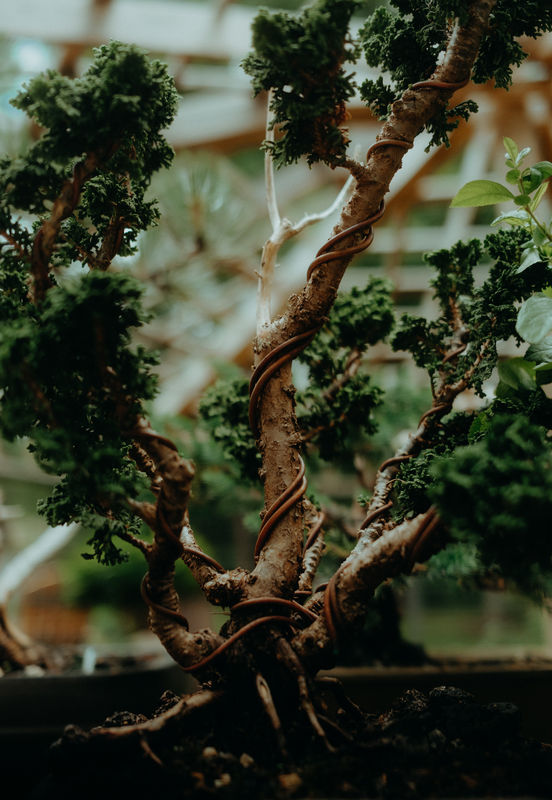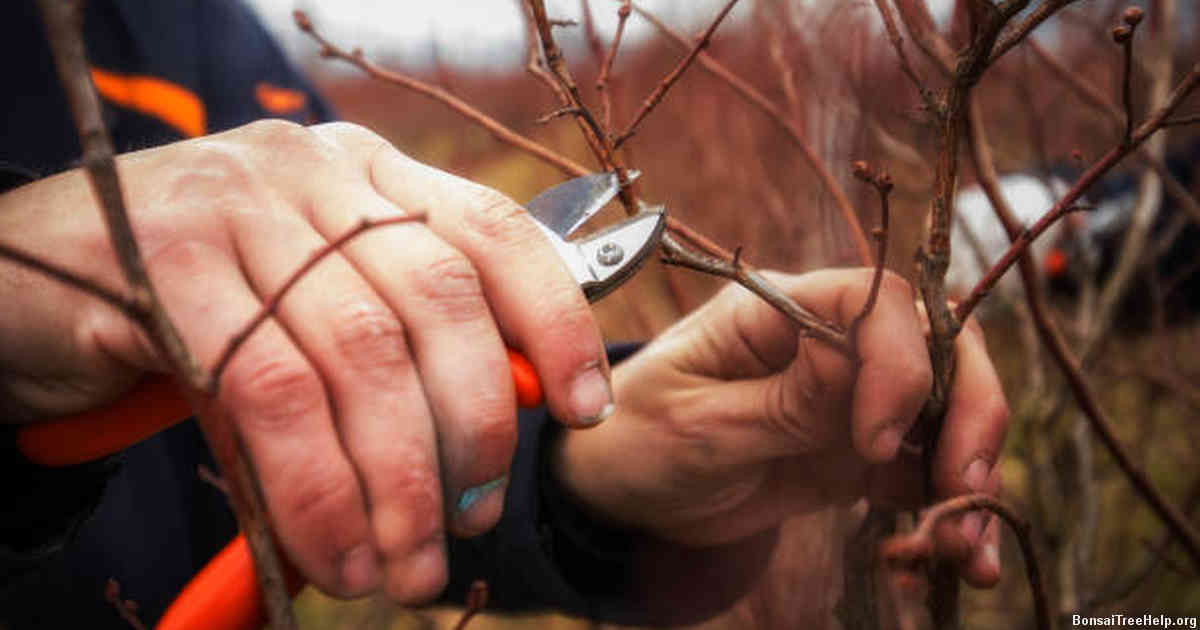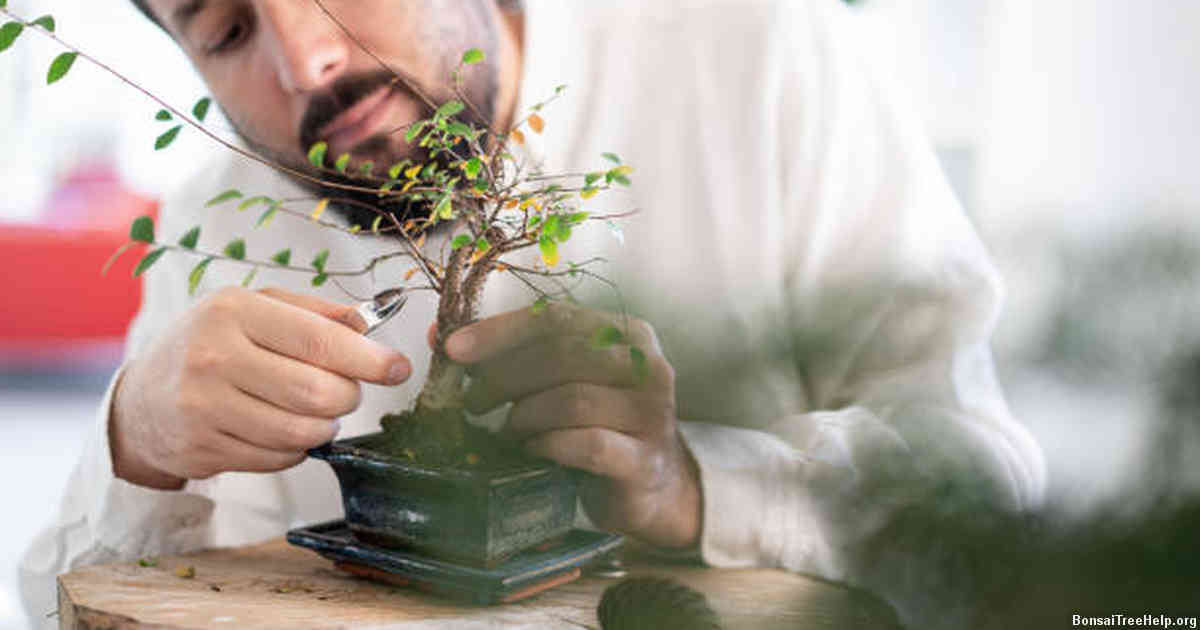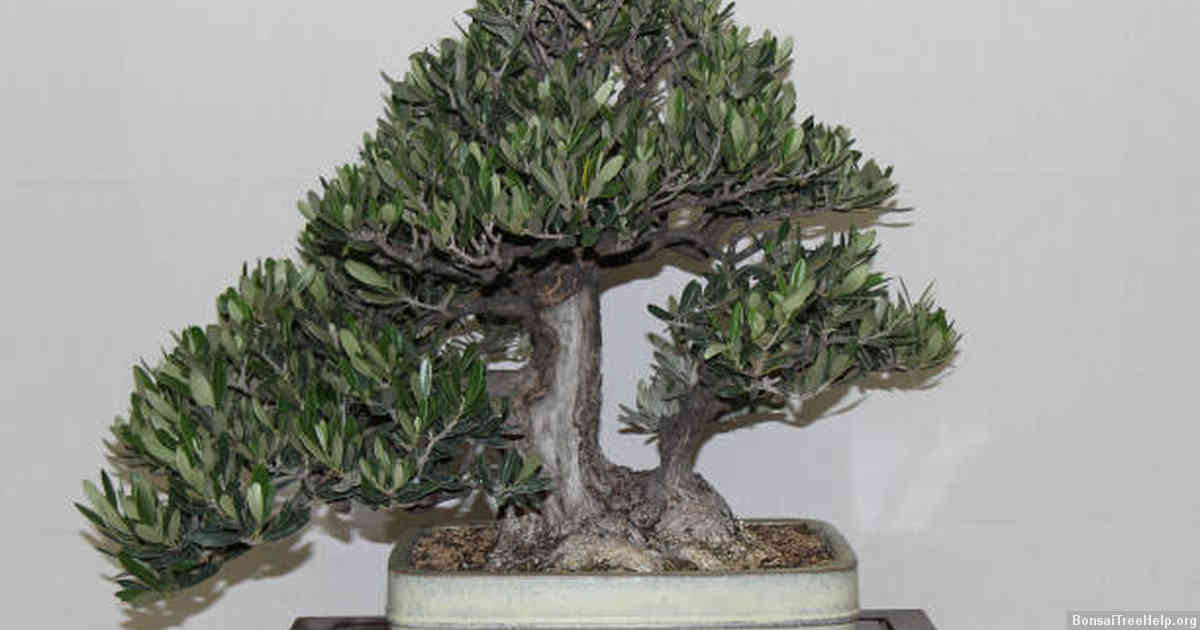
Repotting a bonsai tree should be done every two to three years in Australia. The best time for repotting is spring as the increased temperature and light encourages new root growth. Repotting gives the plant access to fresh soil, nutrients and oxygen which can help it remain healthy over its lifespan. Make sure the tree is watered thoroughly before you begin repotting and if possible, try to keep the roots undisturbed while doing so.
Contents:
- Understanding the Basics of Bonsai Repotting
- Climate and Seasons: Determining the Optimal Time for Repotting
- The Importance of Choosing the Right Pot Size for Your Bonsai
- Preparing Your Bonsai for Repotting: Tools and Techniques
- Step-by-Step Guide to Repotting a Bonsai Tree in Australia
- Post-Repot Care and Maintenance Tips for Healthy Bonsai Growth
- Common Mistakes to Avoid When Repotting Your Bonsai Tree
Understanding the Basics of Bonsai Repotting

Bonsai repotting is essential for maintaining and keeping your bonsai in optimal health, which is why it’s important to have a basic understanding of the subject. Repotting your bonsai should be done at least once every two years, as frequent repotting encourages healthy growth and helps stave off disease. To get the timing right when you decide to repot your bonsai tree, consider factors like climate zone and species type.
The frequency of repotting can vary greatly depending on climate conditions and the size of tree you are caring for. For example, if living in a warm Mediterranean-like environment or dry arid region, where temperatures range from mid 20°C (68°F) to low 30°C (86°F), then two yearly cycles would work best – one cycle around March/April before new foliage begins growing, followed by another one three months later during summertime. Meanwhile those living in cooler climates with lower temperatures should delay their first repot until late spring/early summertime when temperature reaches 25-30°C (77-86°F). The duration between subsequent cycles may also need to be adjusted accordingly.
For specific information related to each bonsai species’ unique needs, consult with experienced gardeners or your local nursery shop staff who will be able to offer advice tailored specifically for you. Understanding this simple fundamental concept will ensure that when it comes time for you to repot your beloved bonsai tree in Australia, you can do so confidently knowing that both yourself and your tree are receiving all the care necessary to promote healthy growth throughout its life span.
Climate and Seasons: Determining the Optimal Time for Repotting

In Australia, the climate and seasons play an important role in deciding when is the best time to repot a bonsai. During winter, the trees become less active due to cold temperature and lack of light, while during summer they are more vigorous and soil may dry out faster. For this reason, it’s usually ideal to repot bonsais between late spring and early autumn. This will allow them to transition into their new home with more ease compared to other times of the year.
It is also important to take into account seasonal rainfall when planning your bonsai’s re-potting date. Rainwater can easily wash away or flood potting soil which would likely cause root rot or other problems for a newly planted tree. Therefore, generally it is recommended to wait until after any expected heavy downpour has passed before performing any major work on your tree such as transplanting it from one container into another.
When carrying out these operations, you should also make sure that temperatures remain within reasonable limits – preferably between 18°C and 25°C – so that your plant doesn’t suffer from excessive shock during its relocation process. Once all factors have been accounted for you will be ready to successfully repot your bonsai in Australia.
The Importance of Choosing the Right Pot Size for Your Bonsai

Choosing an appropriately sized pot for your bonsai tree is paramount in maintaining its health and appearance. Without the right size pot, the roots won’t have enough space to flourish properly and cause a decrease in growth rate. Your bonsai will look best when planted in a container that is slightly larger than the root ball of the tree itself. Pots come in various sizes and shapes to accommodate many types of plants and trees, so be sure to select one that fits your particular bonsai species.
To ensure you repot correctly into a new container, make sure that you clean out any old soil from within it before filling it with fresh compost material. This will help keep pests away from your bonsai whilst also promoting healthier and faster root development for the plant. Use plenty of drainage holes at the base of the pot – this helps to avoid over-watering which can be damaging for delicate root systems on young Bonsais. Doing this step during repotting should bring better long-term results such as more vigorous growth in both branches and foliage.
Be mindful of adding fertiliser when first repotting your bonsai after acquiring it or while changing containers. Many recommend holding off applying any type of feed until several months down the line once re-planting has taken place – too much nutrients all at once can lead to burning or even killing parts of your beloved plant. Keep in mind regular fertilizer applications about every two months are beneficial when trying to encourage healthy growth for your bonsais during summer season but reduce considerably as winter approaches due cold weather conditions slowing down nutrition absorption by plants.
Preparing Your Bonsai for Repotting: Tools and Techniques

When it comes to repotting your bonsai, proper preparation is essential for success. Preparing ahead of time with the right tools and techniques can make all the difference in creating a healthy environment for new growth and helping your bonsai reach its fullest potential.
Choosing the right soil mix is key to providing adequate nutrients and promoting healthy root development. As a general rule, experts recommend using an organic-based soil blend containing components such as akadama, pumice or lava rock, and peat moss. Different plants may require different ratios of these ingredients depending on their needs, so do research beforehand to make sure you get the best combination for your particular variety.
In terms of equipment needed for repotting, having a pair of sharp scissors or shears helps for pruning roots during transplanting; pliers are necessary for removing old drainage material from containers; chopsticks help loosen compacted soil in existing pots before transferring; wire cutters can be used to trim off excess wires on roots as well; and safety glasses provide extra protection from debris when potting up your bonsai. Taking advantage of these items–and any other specialized instruments recommended by expert sources–will ensure that repotting goes smoothly while keeping both you and your plant safe throughout the process.
Step-by-Step Guide to Repotting a Bonsai Tree in Australia

Repotting a bonsai tree is an essential step of its maintenance. In Australia, due to the climate and seasonal changes, you need to repot your bonsai every two years. To properly repot your tree and maintain healthy roots, it is important to follow a few steps in order.
Before beginning the repotting process, it is important that you have all of your supplies ready and easily accessible: a suitable pot for your bonsai’s size and style; specialty soil mixed with gravel or sand; shears or scissors; chopsticks; and protective gloves. While preparing for repotting, observe the shape and roots of your tree. By doing so, you will be able to gain knowledge on how much new soil should be added when planting again in the new pot.
Once all necessary materials are present, start by carefully removing the bonsai from its current container as gently as possible – taking note of any fragile branches or roots during this process. When finished removing from previous pot, prune away any dead or damaged root pieces with shears while ensuring not too much of the root ball is removed at once. After this step has been completed add appropriate amount of newly prepared soil into new pot before placing root ball firmly but gently inside. Use chopsticks then press lightly down against surface of soil to ensure all holes are filled in by sifting more soil through as needed while avoiding causing damage towards tender roots exposed during preparation phase earlier mentioned. Finish off planting process by adding layer small pebbles around side surface of pot (as desired) which can help complete aesthetically pleasing look alongside aiding efficient water drainage system upon completion.
Post-Repot Care and Maintenance Tips for Healthy Bonsai Growth

In the wake of repotting, proper aftercare for your bonsai is essential to ensure healthy growth. To kickstart this process, soak its roots overnight with a lukewarm nutrient solution. Doing this prior to replanting will encourage the uptake of water and promote the much-needed rejuvenation of the roots. During this time, ensure that your Bonsai’s drainage holes are open and clog-free to facilitate efficient drainage without build-up of excess water at the bottom.
To keep their beautiful foliage in check, pruning is an important part of post-repot care for bonsai trees in Australia. This can be done every two weeks or so to regularise tree shape and minimise its size as required – always using hand pruners or shears instead of scissors which may cause damage by crushing twigs and leaves. Beyond just trimming foliage though; routinely cleaning any dead leaves from the soil helps maintain optimal air circulation around root systems – promoting flourishing health in your Bonsai.
Finally; make sure you’re providing it with plenty of sunlight. Ideally 6 to 8 hours a day when possible; making sure you protect it from sudden temperature changes with gradual hardening off over several weeks if moving outdoor on warmer days rather than abruptly placing it in direct sunlight outside all day long. For indoor bonsais, you may also supplement natural lighting with artificial lights at least 12 inches away for up to twelve hours a day (no more!) – Keeping track that their humidity levels stay within reasonable ranges too.
Common Mistakes to Avoid When Repotting Your Bonsai Tree

Bonsai trees are a great addition to any room. They offer beauty, calmness and often provoke positive emotions for those that observe them. When it comes to taking care of a bonsai tree, repotting is essential for its long-term health. That being said, ensuring that you have the correct time, resources and process in place when repotting your bonsai tree is key to avoiding mistakes which could end up damaging your plant beyond repair.
One of the most common mistakes people make when they repot their bonsai tree is using soil with too much nutrients. Since bonsai soil has little nutrient content by design – other than what the fertilizer contains – using soil with an overload of minerals and nitrates can cause more harm than good to your plants roots system as this can suffocate them over time. Incorrect pot size selection may lead to unbalanced growth or even root damage as well if there isn’t enough space available for proper root development – so it’s important to choose a suitable one from the outset.
It’s important not to expose your plant directly in direct sunlight once you have finished repotting it – particularly during warm months in Australia – as this could shock its delicate system due to sudden temperature changes; always leave some period between transplantation and direct exposure. With these tips in mind you will be able maximize the chance for success when repotting your Bonsai Tree!
Leave a Reply